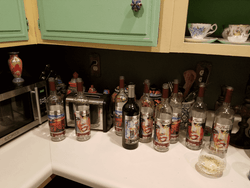There’s something magical about uncorking a bottle of wine. The anticipation, the aroma, the promise of complex flavors dancing on your palate. But what happens when that first sip isn’t quite what you expected? Understanding wine flaws and faults can demystify the world of wines and enhance your overall drinking experience. In this journey, we will explore some of the most common wine flaws, providing you with the knowledge to identify them and empowering you to make informed choices.
What are Wine Flaws or Faults?
Before we dive into the nuances of flawed wines, let’s understand what wine flaws and faults really mean. A flaw in wine refers to any characteristic that deviates from the ideal, affecting its taste, aroma, or appearance. These flaws can arise during various stages of winemaking, from grape cultivation to bottling. While some flaws are minor and barely noticeable, others can significantly compromise the wine’s quality, rendering it undrinkable.
The Curse of Oxidation
One of the most common wine flaws, oxidation occurs when wine is overexposed to oxygen. This can happen due to faulty corks, improper storage, or simply by leaving the bottle open for too long. The result? A wine that tastes flat, devoid of its natural fruitiness, and often takes on a brownish hue.
Identifying Oxidation Wine Flaws:
- Look for a brownish or amber color, especially at the rim of the glass.
- Smell the wine; an oxidized wine often exhibits a nutty or sherry-like aroma.
- Taste for a lack of freshness and a flat, dull character.

Tainted by TCA: Cork Taint
Cork taint, caused by the presence of the chemical compound 2,4,6-trichloroanisole (TCA), is a dreaded flaw for both winemakers and enthusiasts. TCA can develop in corks or wooden structures in wineries, contaminating the wine and imparting a musty, moldy odor and taste.
Identifying Cork Taint:
- Sniff the wine for a damp, musty aroma reminiscent of wet cardboard or a moldy basement.
- The tainted flavor is often described as ‘off’ or ‘dank,’ overshadowing the wine’s natural characteristics.
UV Light Damage: The Silent Culprit
Wine, like many other substances, can be adversely affected by exposure to ultraviolet (UV) light. This exposure can alter the wine’s chemical composition, leading to a condition known as lightstruck or “skunky” wine. The aroma and taste of the affected wine resemble that of a skunk, making it highly unappealing.
Identifying UV Light Damage:
- Check for a strong, pungent aroma reminiscent of skunk spray.
- Taste for an off-putting bitterness and a harsh, unpleasant aftertaste.
Spoiled by Sulfur Compounds
Sulfur compounds are commonly used in winemaking to prevent oxidation and microbial spoilage. However, excessive sulfur dioxide can lead to various issues, including “reduced” or “sulfur” faults. Reduced wines often have a pungent aroma akin to rotten eggs or burnt rubber, making them highly unpalatable.
Identifying Sulfur Wine Faults:
- Smell the wine for off-putting odors of rotten eggs, burnt matches, or struck flint.
- Taste for an unusual bitterness or a sharp, prickly sensation on the tongue.
When Bacteria Strikes: Brettanomyces
Brettanomyces, often referred to as “Brett,” is a strain of yeast that can contaminate wine during fermentation or aging. While small amounts can add complexity, an excessive presence can lead to unpleasant aromas and flavors, such as barnyard, sweaty leather, or band-aid. This type of wine fault is most common in white wines, especially Chardonnay.
Identifying Brettanomyces:
- Sniff for distinctive odors like barnyard, horse stable, or medicinal notes.
- Taste for a dry, leathery, or metallic finish, often accompanied by a lack of fruitiness.

Heat Damage: When Wine Gets Cooked
Extreme temperatures, especially heat, can wreak havoc on wine. When wine is exposed to high temperatures for an extended period, it undergoes a process similar to cooking, leading to a flat, stewed flavor. Heat-damaged wines lose their vibrancy, complexity, and balance.
Identifying Heat Damage Wine Flaws:
- Look for signs of seepage around the cork, indicating exposure to high temperatures.
- Taste for a lack of freshness, with muted fruit flavors and a one-dimensional, cooked character.
Understanding Sedimentation
While not necessarily a flaw, sedimentation refers to solid particles that settle at the bottom of a wine bottle as it ages. Sedimentation is a natural process and occurs due to compounds like tannins and pigments binding together over time. Although harmless, it can be unpleasant if you’re not prepared.
Identifying Sedimentation:
- Hold the bottle up to the light; you might notice tiny particles settled at the bottom.
- Pour the wine carefully, leaving the sediment in the bottle.
Secondary Fermentation: The Fizz That Went Wrong
In some cases, wines can undergo secondary fermentation in the bottle, leading to the development of unwanted bubbles. While this is desirable in sparkling wines, it can be a flaw in still wines. Secondary fermentation can occur due to residual sugar or improper stabilization, resulting in a fizzy, effervescent texture that contradicts the wine’s intended style.
Identifying Secondary Fermentation:
- Observe the presence of tiny bubbles rising in the glass even though the wine is not labeled as sparkling.
- Taste for a fizzy sensation on the palate, accompanied by a slight prickle and effervescence.

Empowering Your Palate
Being able to identify common wine flaws equips you with the knowledge to appreciate wines better and make informed choices. Remember, every flaw teaches us something about the intricate world of winemaking. So, the next time you raise your glass, you can do so with confidence, knowing that you have the expertise to distinguish between a flaw and a fantastic vintage. Cheers to a more nuanced, flavorful, and enjoyable wine journey!





